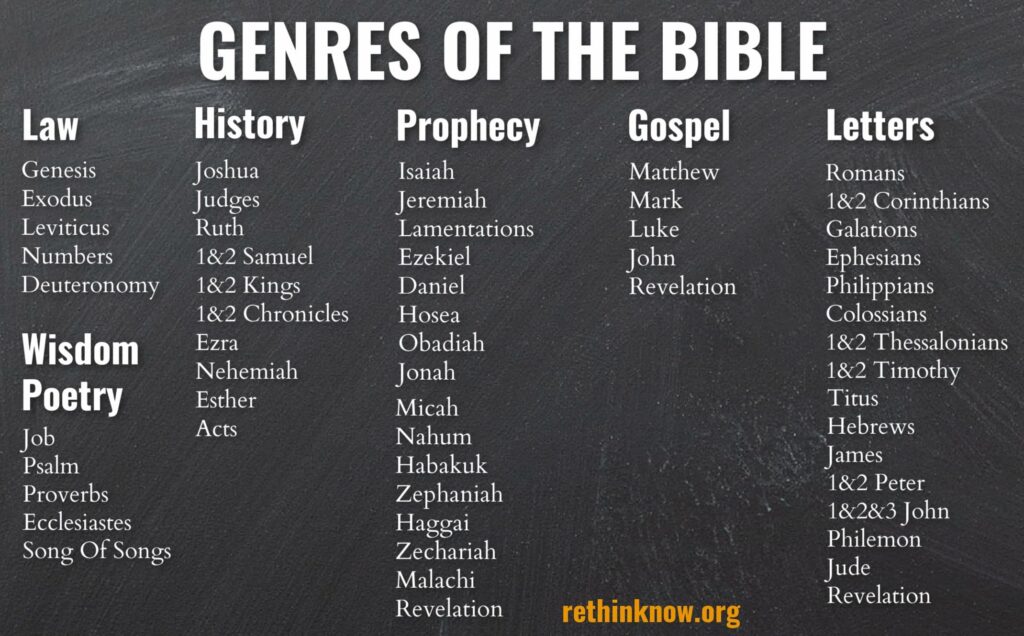What Order Should You Read the Bible? A Comprehensive Guide
Reading the Bible can be a transformative experience, but with 66 books spanning different genres, time periods, and narratives, it can be challenging to know where to begin. The order in which you read the Bible can significantly impact your understanding and appreciation of its message. In this comprehensive guide, we’ll explore various approaches to reading the Bible, including canonical order, chronological order, and thematic reading plans. We’ll also provide insights into the benefits of each method and offer tips to help you get the most out of your Bible reading journey.
The Canonical Order
The canonical order is the traditional way of reading the Bible, following the arrangement of books as they appear in most modern translations. This order groups the books into categories such as the Pentateuch, Historical Books, Wisdom Literature, Prophets, Gospels, and Epistles.
Benefits of Reading in Canonical Order
- Familiarity: The canonical order is the most widely recognized and used approach, making it easy to follow along with sermons, Bible studies, and other resources.
- Narrative Flow: While not strictly chronological, the canonical order still maintains a general narrative flow, allowing readers to follow the story of God’s redemption from creation to the early church.
- Thematic Connections: Reading the Bible in canonical order helps readers identify thematic connections between books and understand the overarching message of Scripture.
Drawbacks of Reading in Canonical Order
- Lack of Chronology: The canonical order does not strictly follow the historical timeline, which can make it challenging to understand the context of certain events and prophecies.
- Repetition in Gospels: Reading the four Gospels back-to-back can lead to repetition and make it difficult to maintain focus and interest.
The Chronological Order
The chronological order arranges the books of the Bible based on the historical timeline of the events they describe. This approach aims to provide a more linear reading experience, helping readers understand the historical context and progression of God’s plan.
Benefits of Reading in Chronological Order
- Historical Context: Reading the Bible in chronological order provides a clearer understanding of the historical context in which the events and teachings took place.
- Prophecy Fulfillment: Chronological reading makes it easier to see how Old Testament prophecies were fulfilled in the New Testament, strengthening faith in God’s plan.
- Narrative Continuity: By following the timeline, readers can better appreciate the continuous story of God’s redemption and the development of His relationship with humanity.
Drawbacks of Reading in Chronological Order
- Interruption of Narrative Flow: Chronological reading can disrupt the narrative flow of the Bible, as some books are split into multiple parts based on their historical setting.
- Lack of Thematic Connections: Chronological reading may make it more challenging to identify thematic connections between books and passages.
Thematic Reading Plans
Thematic reading plans focus on specific themes or topics, allowing readers to explore related passages from different parts of the Bible. These plans can be particularly helpful for those looking to deepen their understanding of particular doctrines or issues.
Benefits of Thematic Reading
- Focused Learning: Thematic reading plans enable readers to dive deep into specific topics, gaining a more comprehensive understanding of the Bible’s teachings on those subjects.
- Practical Application: Thematic reading can help readers apply biblical principles to their daily lives, as they explore how the themes relate to their personal experiences.
- Variety: Thematic reading plans often draw from various parts of the Bible, providing a diverse reading experience and preventing monotony.
Drawbacks of Thematic Reading
- Lack of Narrative Context: Thematic reading can sometimes remove passages from their original narrative context, making it more challenging to understand their full meaning and significance.
- Potential for Imbalance: If not carefully structured, thematic reading plans may lead to an imbalanced understanding of the Bible, with certain themes receiving more attention than others.
Tips for Effective Bible Reading
- Choose a Translation: Select a Bible translation that is easy for you to understand, such as the New International Version (NIV) or the English Standard Version (ESV).
- Set a Regular Reading Schedule: Establish a consistent time and place for your Bible reading, and stick to it as much as possible.
- Pray Before Reading: Ask God to open your heart and mind to His Word, and to guide your understanding.
- Read with Purpose: Approach your Bible reading with a specific goal in mind, whether it’s to learn more about a particular topic or to grow in your relationship with God.
- Take Notes: Consider keeping a journal or notebook to record your thoughts, questions, and insights as you read.
- Seek Community: Join a Bible study group or connect with other believers who can discuss the Bible with you and provide support and accountability.
- Be Patient and Persistent: Bible reading is a lifelong journey, and it’s important to be patient with yourself and persistent in your efforts.
Conclusion
There is no single “best” way to read the Bible, as each approach has its own benefits and drawbacks. The most important thing is to read regularly, with an open heart and mind, and to allow God’s Word to transform your life. Whether you choose to read in canonical order, chronological order, or follow a thematic plan, the key is to engage with the Bible consistently and allow its message to take root in your heart and mind.
FAQ
- What is the best order to read the Bible?
- There is no universally agreed upon “best” order, as different approaches have their own benefits. The most important thing is to read regularly and allow God’s Word to transform your life.
- Should I read the Bible in chronological order?
- Reading the Bible in chronological order can provide helpful historical context and a clearer understanding of the progression of God’s plan. However, it may disrupt the narrative flow and make it more challenging to identify thematic connections.
- What is the difference between canonical and chronological order?
- Canonical order follows the traditional arrangement of books as they appear in most modern Bible translations, while chronological order arranges the books based on the historical timeline of the events they describe.
- How long does it take to read the Bible?
- The time it takes to read the Bible can vary depending on the translation, reading speed, and the amount of time devoted to reading each day. On average, it can take anywhere from a few weeks to several months to read the entire Bible.
- What is the purpose of reading the Bible?
- The primary purpose of reading the Bible is to grow in one’s relationship with God, learn about His character and plan, and be transformed by His Word. Bible reading should lead to a deeper understanding of God’s love and a desire to live according to His will.
- Should I read the Bible alone or in a group?
- Both individual and group Bible reading have their benefits. Individual reading allows for personal reflection and application, while group reading provides opportunities for discussion, accountability, and learning from others.
- What should I do if I get stuck or confused while reading the Bible?
- If you encounter a passage that is difficult to understand, don’t get discouraged. Consider using Bible commentaries or other resources to help provide context and clarity. You can also pray for understanding and seek guidance from other believers or your church leaders.
- How can I remember what I read in the Bible?
- Taking notes, journaling, and discussing what you’ve read with others can help reinforce your understanding and retention of the Bible’s message. You can also try memorizing key verses or passages that resonate with you.
- What is the most important thing to remember while reading the Bible?
- The most important thing to remember while reading the Bible is that it is God’s inspired Word, given to us for our spiritual growth and transformation. Approach your Bible reading with humility, openness, and a desire to know God more deeply.
- Can I read the Bible in any order I want?
- While there are benefits to following a specific reading plan, you can certainly read the Bible in any order you prefer. The most important thing is to engage with God’s Word consistently and allow it to speak to your heart and mind.



